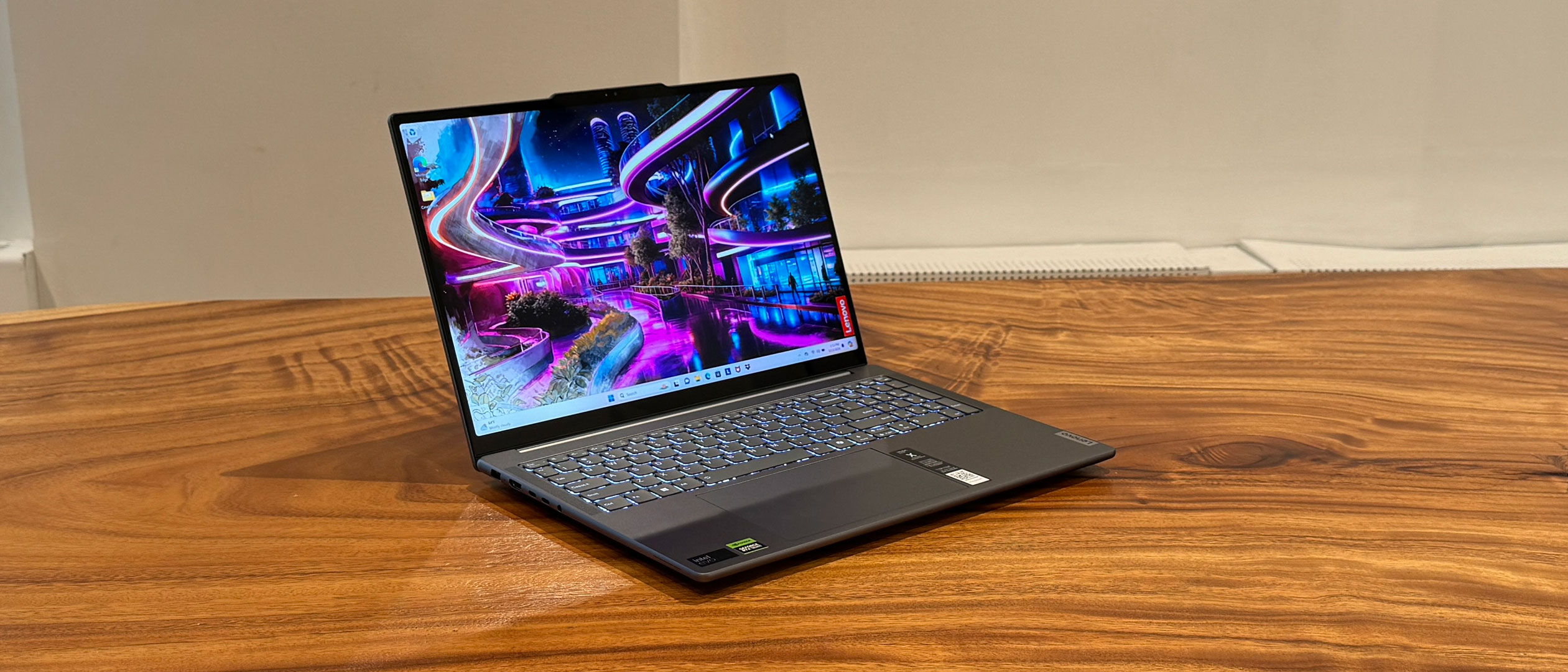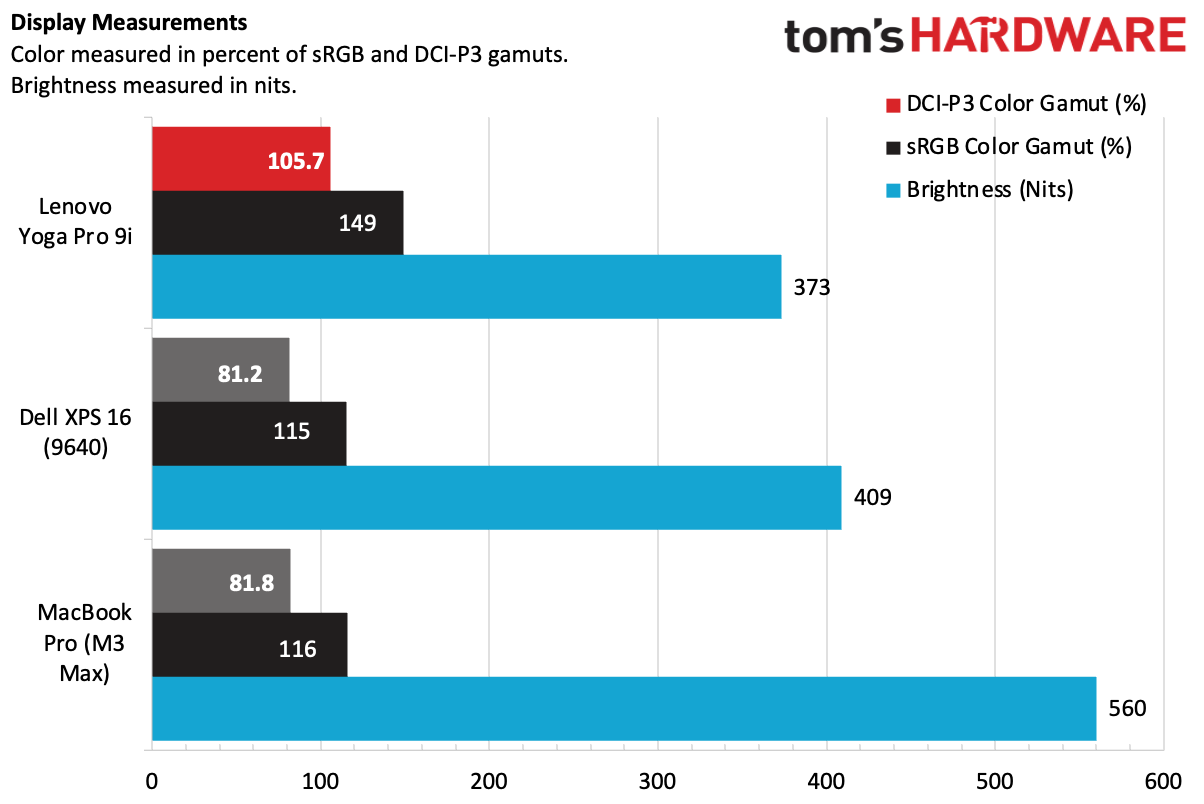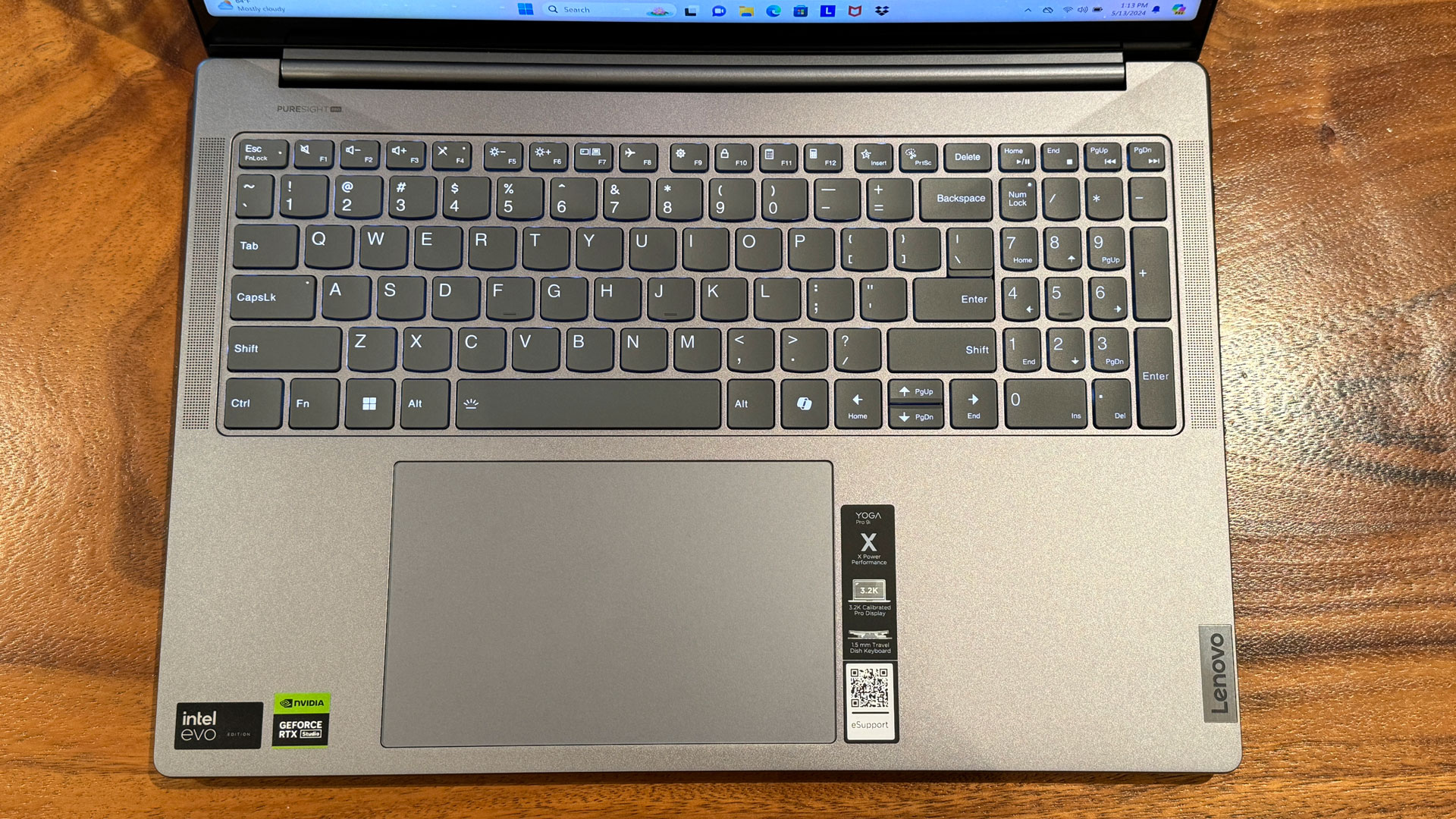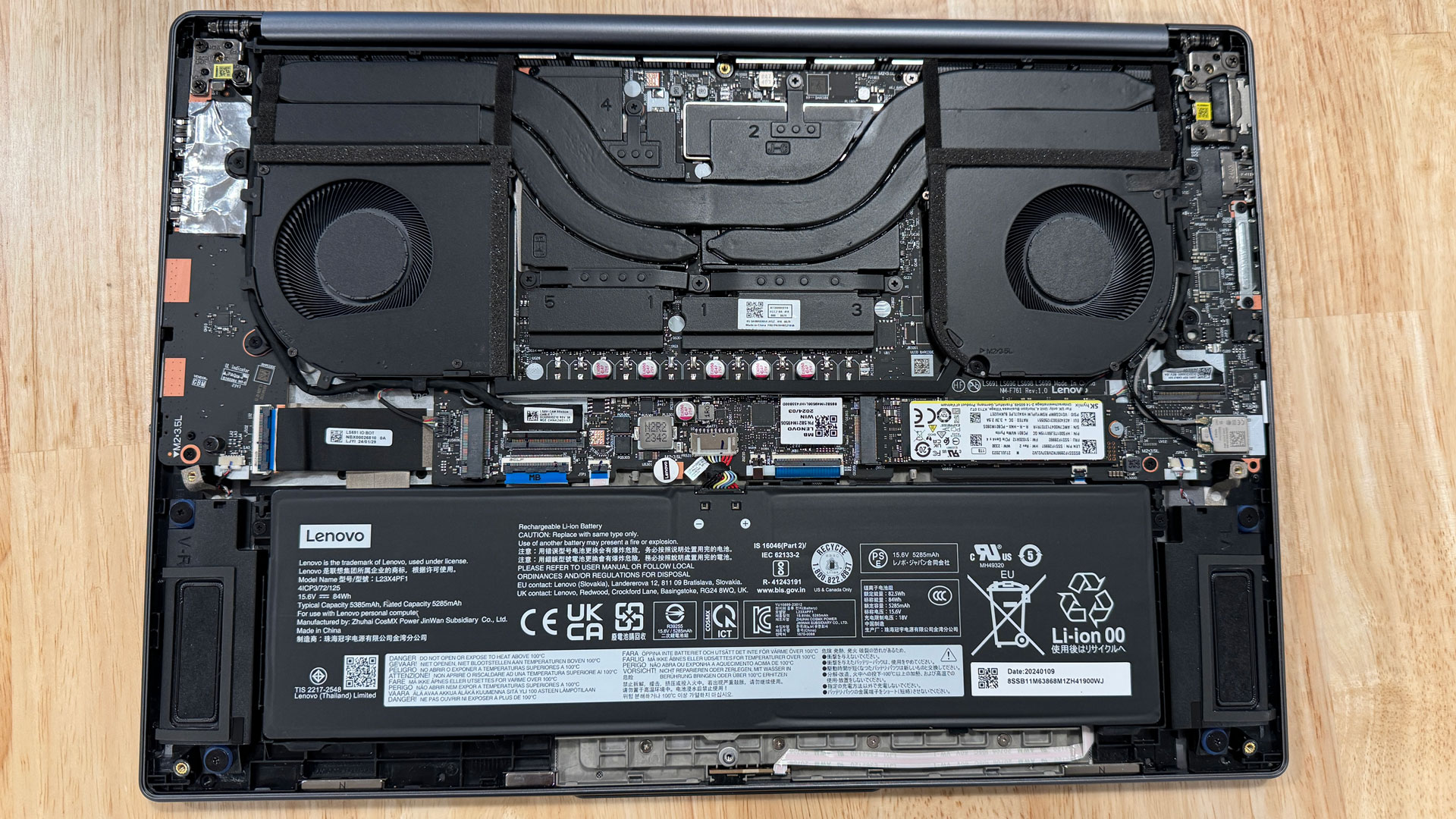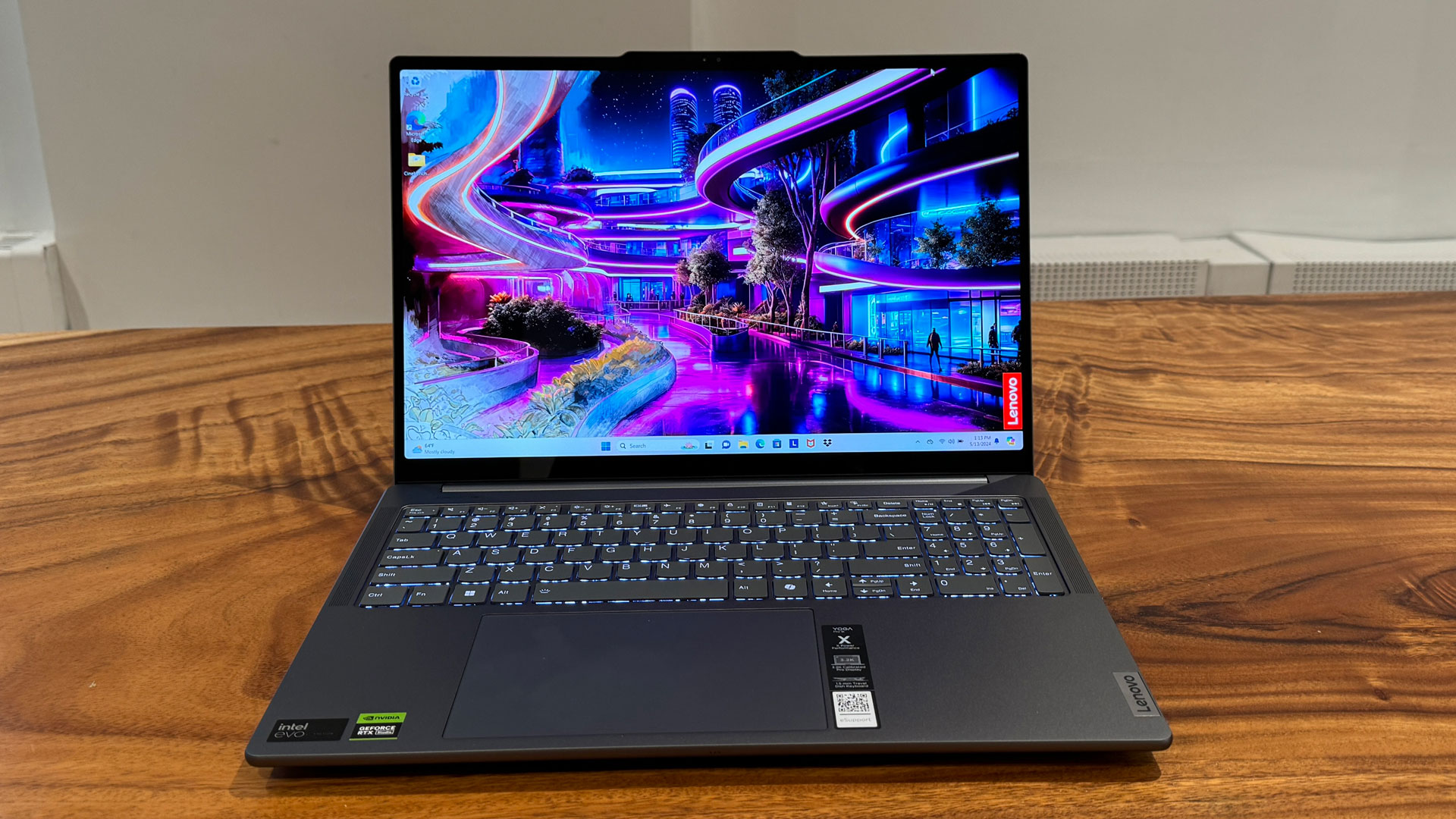Tom's Hardware Verdict
The Lenovo Yoga 9i is a powerful 16-inch laptop with a deep keyboard, 5MP webcam and lighter chassis than competitors, though its battery life could be better.
Pros
- +
Lighter than competitors
- +
Vivid display colors
- +
Extra SSD slot
- +
5MP webcam
- +
Deep key travel
- +
Cheaper than Dell XPS 16 with GPU
Cons
- -
Display could be brighter
- -
A bit of bloatware
- -
Lower battery life than competition
Why you can trust Tom's Hardware
It wasn't long ago that 15-inch laptops were the most popular size among the best ultrabooks. 16-inch workhorses are slowly taking over their spots. The Lenovo Yoga Pro 9i ($1,482 to start, $1,699.99 as tested) fits in as a prosumer notebook, packed with an Intel Core 9 Ultra 185H and an Nvidia GeForce RTX 4050 laptop GPU.
The system is lighter than some competitors (even if it's slightly larger in footprint), and the 5MP webcam and an extra SSD slot for later upgrades are extra pluses. But others in this field compete on fancier displays, longer battery life, and, in some cases, performance.
Design of the Lenovo Yoga Pro 9i
Lenovo's latest Yoga puts the emphasis on the work. The machine itself isn't particularly crying out for attention. The aluminum lid is a plain gray with the Yoga logo stamped in a reflective coating. A reverse notch, a communications bar with the microphone and camera, juts out to make it easy to lift. From a side perspective, there is a bit of a mishmash happening: the lid is flat, while the bottom has a rounded edge.
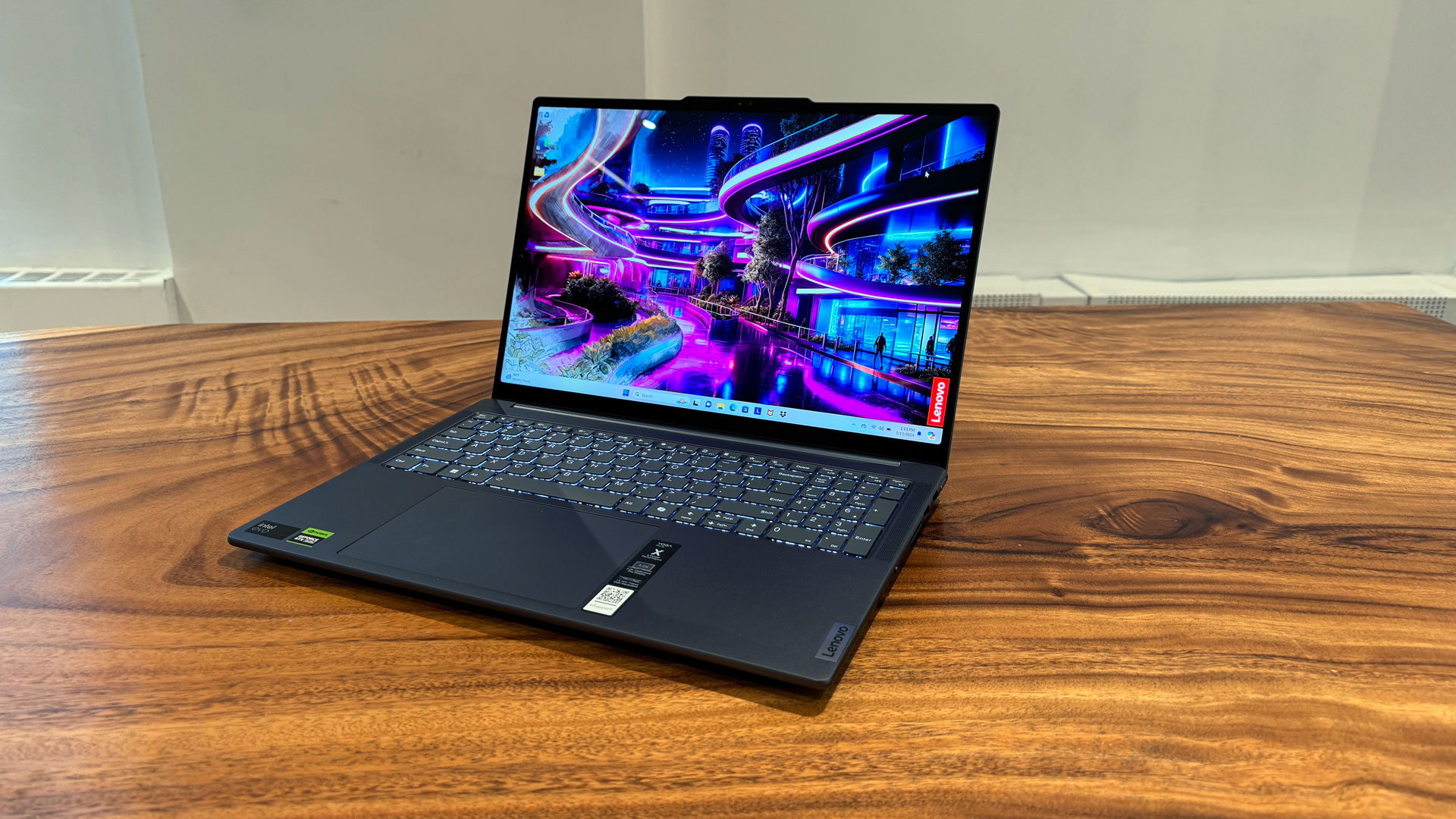
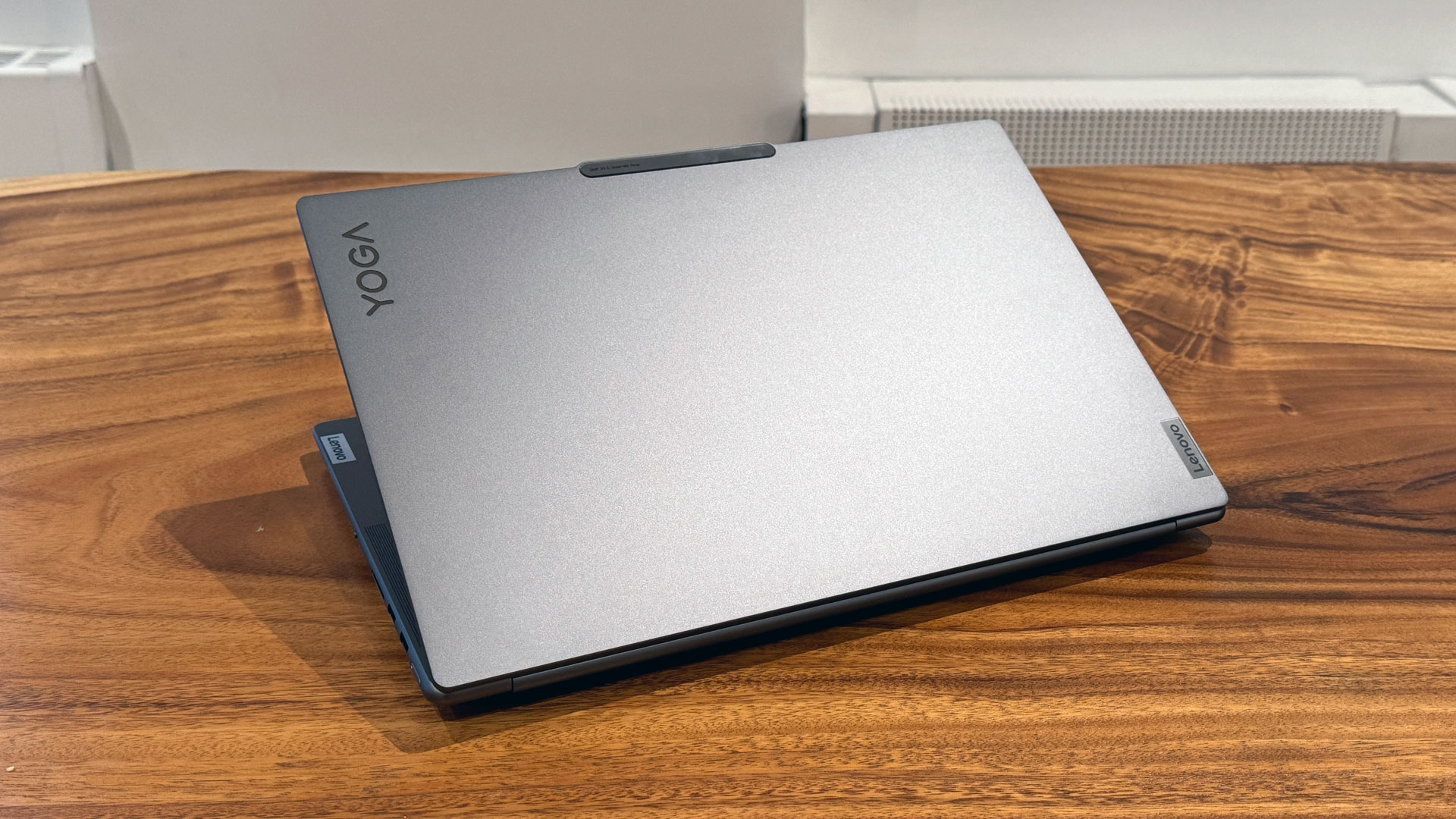
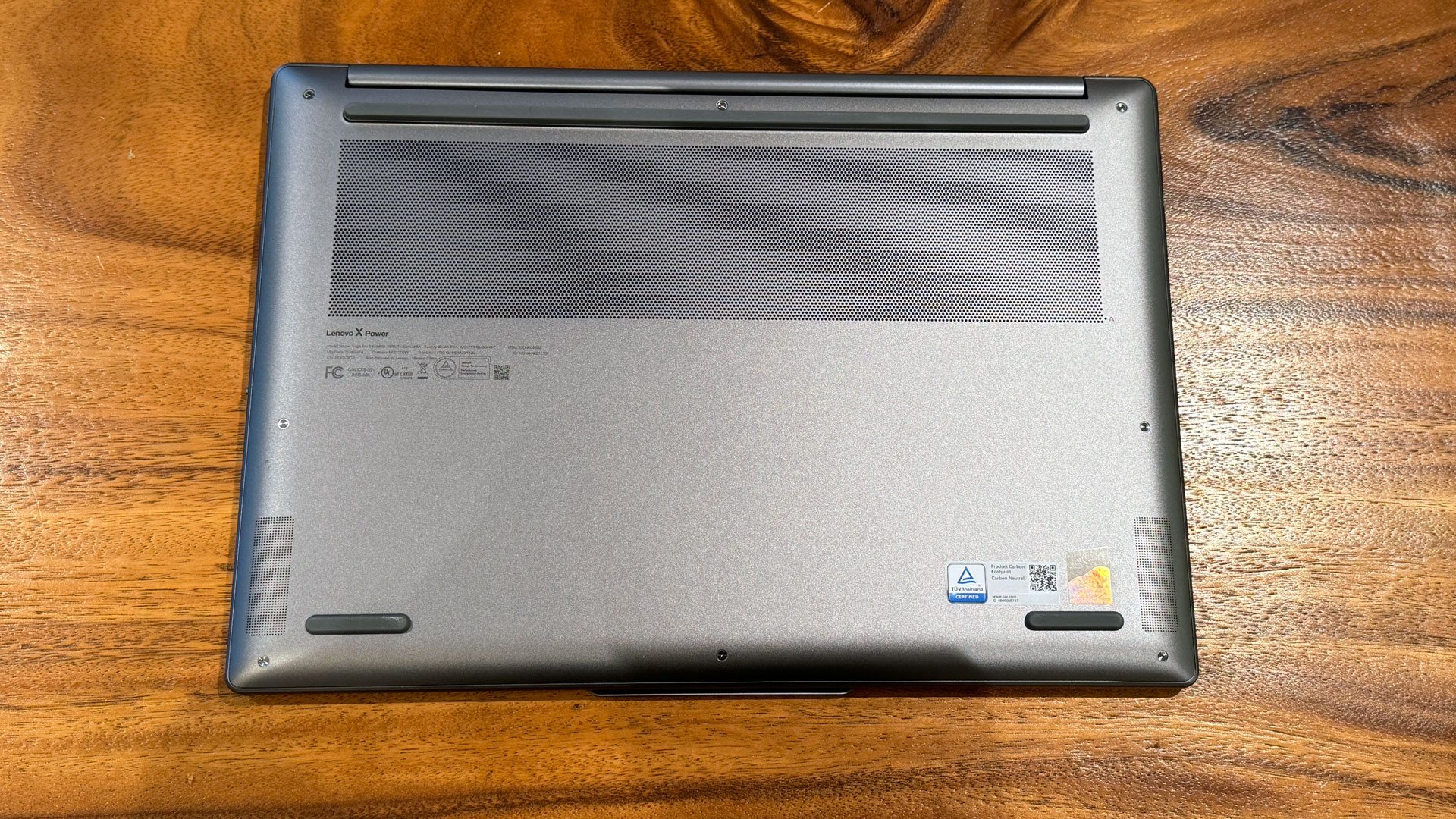
Much of the same can be said when you lif the lid. The aluminum chassis has a set of gray chiclet keys. It holds up the 16-inch display, which has a bezel that's thicker than some ultraportables, as well as a spacious touchpad.
The ports are located on the sides. On the left are the power port, HDMI output, two USB Type-C ports (one of which supports Thunderbolt 4), and a 3.5 mm headphone jack. The right side is where you'll find the SD card slot and a pair of USB Type-A ports, as well as the camera e-shutter and the power button.


Lenovo wins on weight compared to some of the competition. At 4.64 pounds, it's lighter than both the Dell XPS 16 (9640) and MacBook Pro 16 with M3 Max, both of which are 4.8 pounds.
The Yoga measures 14.28 x 9.99 x 0.70 inches, which is larger in all dimensions than the Mac (14.01 x 9.77 x 0.66 inches) and the XPS (14.01 x 9.77 x 0.67 inches), so you'll have to choose between weight and the footprint in your bag.
Get Tom's Hardware's best news and in-depth reviews, straight to your inbox.
Lenovo Yoga Pro 9i Specifications
| CPU | Intel Core Ultra 9 185H |
| Graphics | Nvidia GeForce RTX 4050 laptop graphics (6GB GDDR6, 100W max graphics power, 2,055 MHz boost clock) |
| Memory | 32GB LPDDR5x-7467 (soldered) |
| Storage | 1TB PCIe 4 NVMe SSD |
| Display | 16-inch, 3200 x 2000, 165 Hz, Touch, Dolby Vision |
| Networking | Intel Wi-Fi 6E AX211, Bluetooth 5.3 |
| Ports | 2x USB Type-A 3.2 Gen 1, USB Type-C 3.2 Gen 2, Thunderbolt 4, HDMI, 3.5 mm headphone jack, SD card reader |
| Camera | 5MP, IR, e-shutter switch |
| Battery | 84 WHr |
| Power Adapter | 170 W |
| Operating System | Windows 11 Home |
| Dimensions (WxDxH) | 14.28 x 9.99 x 0.70 inches / 362.72 x 253.69 x 17.9 mm |
| Weight | 4.64 pounds (2.1 kg) |
| Price (as configured) | $1,699.99 |
Productivity Performance on the Lenovo Yoga Pro 9i
We tested the Yoga Pro 9i in a configuration with an Intel Core Ultra 9 185H processor, Nvidia GeForce RTX 4050 laptop graphics, 32GB of RAM, and a 1TB PCIe 4 NVMe SSD.
Competitors for this system include the Dell XPS 16 (9640), which uses an Intel Core Ultra 7 155H processor but is paired with other, higher-spec parts, and the MacBook Pro, using Apple's M3 Max. The latter is very expensive, and was outfitted with 128GB of RAM.
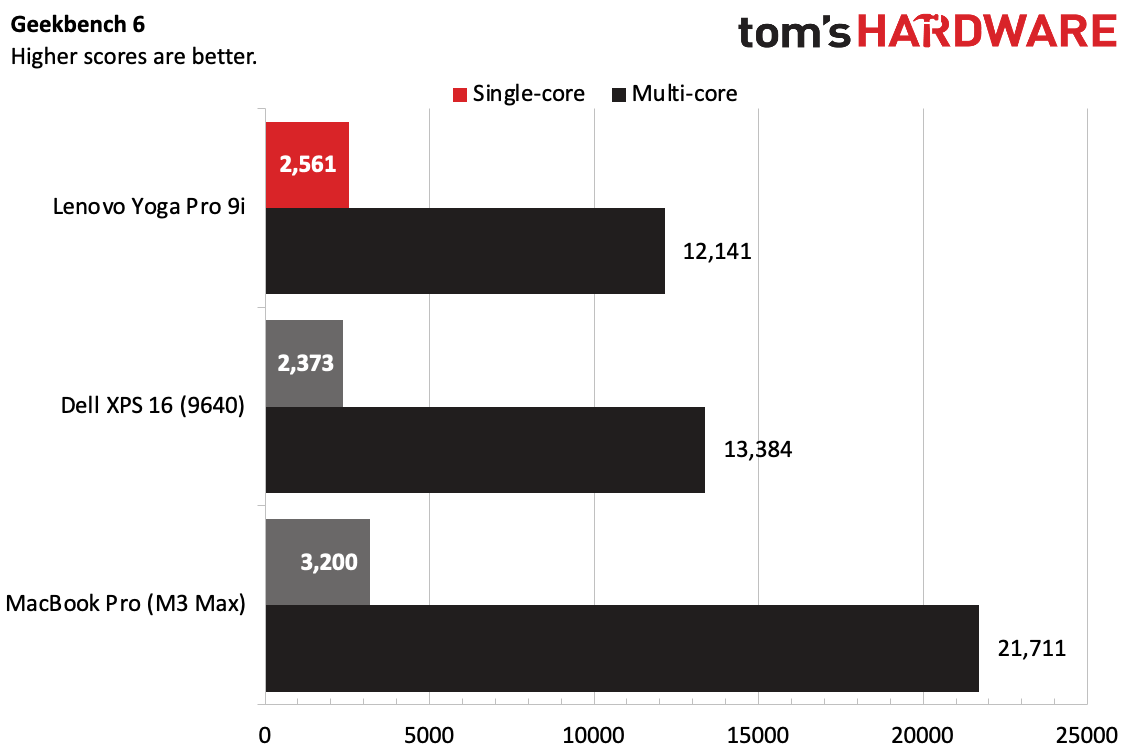
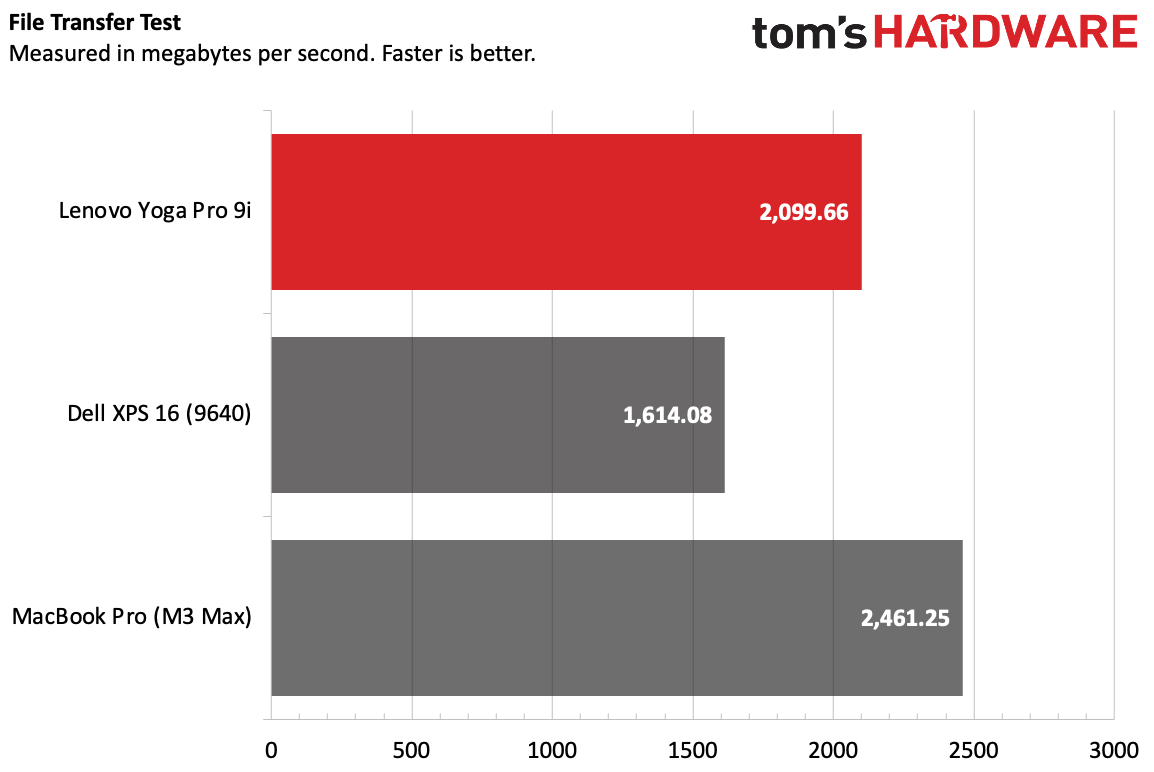
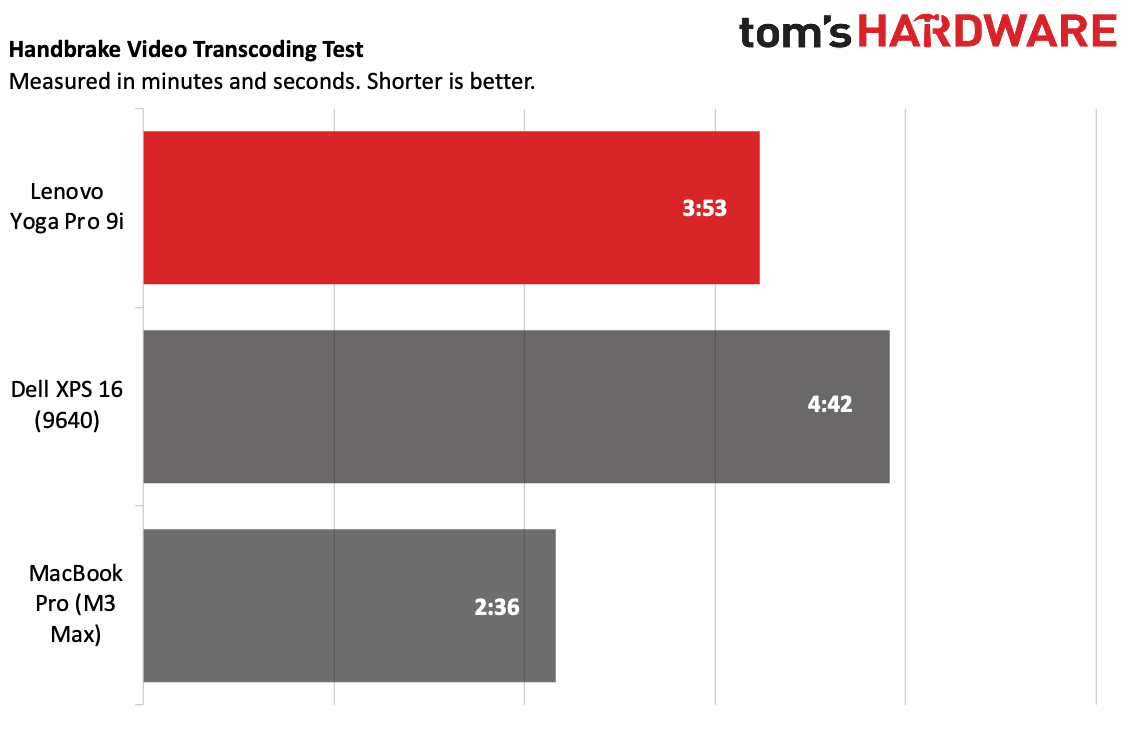
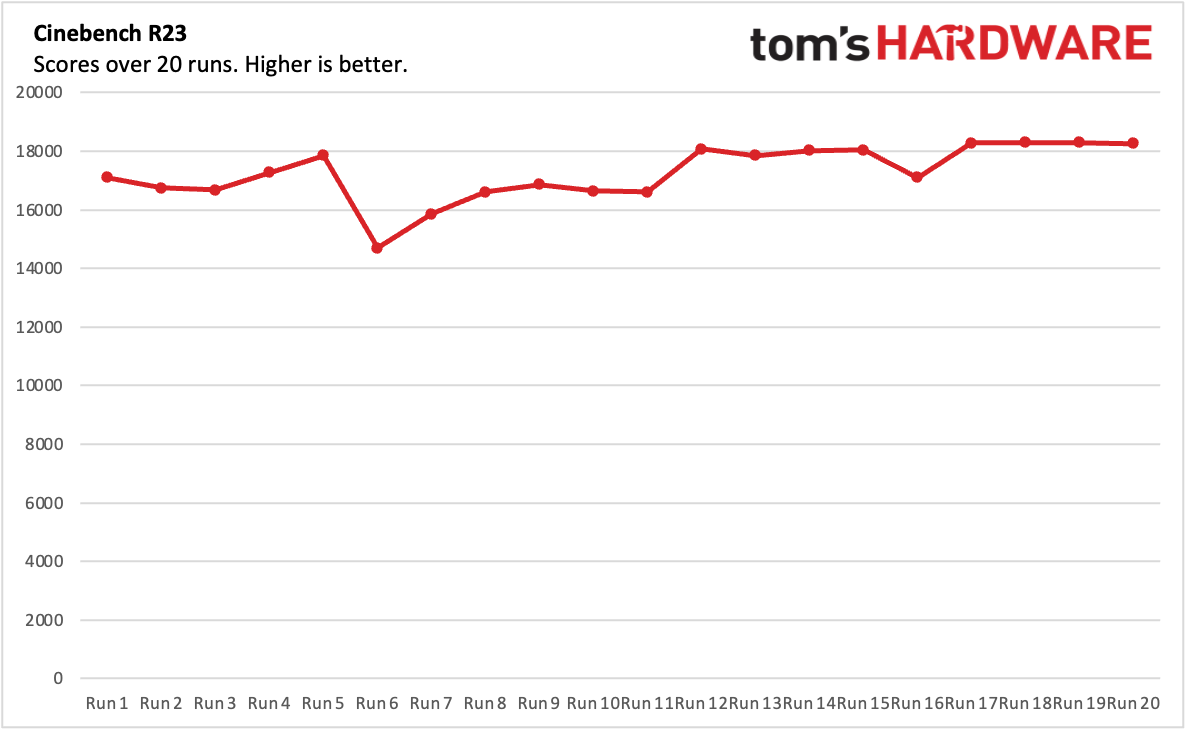
On Geekbench 6, the Yoga achieved a single-core score of 2,561 and a multi-core score of 12,141. That beat the Dell on single-core performance, though the XPS won in multi-core. The MacBook Pro with M3 Max was the top scorer by far.
The Yoga copied 25GB of files at a rate of 2,099.66 MBps, again surpassing the XPS 16 (16,15.08 MBps). The Mac was the fastest here, at 2,461.25 MBps.
On Handbrake, the Yoga Pro 9i transcoded a 4K video to 1080p in 3 minutes and 35 seconds, ahead of the XPS 16 (4:42) but behind the MacBook Pro (2:36).
We pushed the system by running Cinebench R23 in succession 20 times. The machine did see some ups and downs in performance, really only coming together at the end with scores in the high 18,000's. During the test, the CPU's P cores ran at an average of 3.71 GHz, the E cores measured 2.86 GHz, and the low-power E cores reached 1.09 GHz. The CPU package ran at an average 79.97 degrees Celsius.
The RTX 4050 will allow for some gaming, too. For instance, we ran the Shadow of the Tomb Raider benchmark (highest preset), and the system reached 74 frames per second. However, that 3,200 x 2,000 is a lot for the RTX 4050 for powerful graphics applications, and it only hit 28 fps at its native resolution.
Display on the Lenovo Yoga Pro 9i
Lenovo equipped the Yoga Pro 9i with a 16-inch, 3200 x 2000 touchscreen that can run at 165 Hz, which should make for smooth animation or some quick esports on a work break.
When I watched the trailer for Deadpool & Wolverine, Wade Wilson's red suit was particularly vivid, as was Wolverine's trademark yellow costume. I wouldn't have minded if the screen got brighter, but the IPS panel is mostly serviceable.
On our light meter, the Yoga measured 373 nits of brightness, falling behind both the XPS OLED panel (409 nits) and the MacBook Pro's mini-LED screen (560 nits).
But in terms of color, the Legion won out. It covered 149% of the sRGB color gamut and 105.7% of the DCI-P3 color gamut, which is exceptional, and ahead of both of its competitors.
Keyboard and Touchpad on the Lenovo Yoga Pro 9i
A sticker that's applied to the Yoga Pro 9i claims that the keyboard has 1.5mm of key travel, and I can believe it — when I took the Monkeytype typing test, it felt significantly deeper than most laptops I've tested. I hit 110 words per minute at 98% accuracy, which is pretty good for me.
The layout features a number pad for Excel enthusiasts who like the extra buttons. For many, this may be their first time seeing Microsoft's Copilot key, which is between the right alt and arrow keys.
The touchpad is generously proportioned at 5.91 inches wide by 3.75 inches tall. The glass is smooth and responds well to even complex multi-touch gestures. However, you'll want to be sure to click toward the bottom half, as Lenovo isn't using haptics here.
Audio on the Lenovo Yoga Pro 9i
The Yoga Pro comes packing a 6-speaker system, including four 2W woofers and a pair of 2W tweeters. They get loud, and the Yoga Pro 9i easily filled our video studio with the sounds of Death Cab for Cutie's "Title and Registration." It highlighted the drums, strings, and guitars, and there was even a bit of bass, which laptops tend to struggle with.
In Dolby Atmos, I was surprised to find the effects turned off. Putting those on the detailed preset was my favorite, and it brought out more of the song's vocals.
The volume can distort a bit at the highest volumes, but luckily you don't really need to keep it there for some solid listening.
Upgradeability of the Lenovo Yoga Pro 9i
To open the Yoga Pro 9i, you need to remove eight Torx screws from the bottom of the laptop's casing. The three clips closest to the laptop's hinge are longer, so be sure to keep them separate. You'll need a tool to pry up clips from around the case.
With the bottom off, you'll be able see the battery and an M.2 2280 SSD. Our review unit had a second, empty SSD slot on the left side of the board, which is good for expanding storage later on. The RAM and the networking card are soldered to the motherboard, so no changes or upgrades there.
Battery Life on the Lenovo Yoga Pro 9i
While over 9 hours of battery life is pretty solid for a laptop with a discrete GPU, the Yoga Pro 9i didn't last as long as its competition. Lenovo's PC ran on our battery test, with the screen set at 150 nits while streaming video, browsing the web, and running light graphics test, for 9 hours and 51 minutes. The Dell XPS 16 ran for 10:44, while the MacBook Pro lasted more than 18 hours on a charge.
Heat on the Lenovo Yoga Pro 9i
We took skin temperature measurements while running the demanding Cinebench R23 workload 20 times in a row.
The keyboard reached 98.1 degrees Fahrenheit between the G and H keys, while the touchpad stayed cooler at 87 F (and got as cool as 84 F further from the keyboard). The bottom of the laptop hit 107.4 F at its hottest point, near the intake fans at the rear of the device.
Webcam on the Lenovo Yoga Pro 9i
The Yoga Pro 9i comes with a 5MP webcam. In our still shot testing, that resulted in 1440p photos. On a dim day at our offices, the Yoga had to contend with just overhead office lighting, and it did decently, considering. I could pick out individual hairs on my head and wrinkles on my forehead from a stressful day. Some details, like my beard, however, were muddled. But my green t-shirt was color accurate, as was my face, while other details were yellowed by the lights.
The camera has an IR sensor so you can unlock the computer with facial recognition using Windows Hello.
While there's no physical privacy cover, there's an e-shutter switch on the right side of the laptop that disableds the integrated webcam.
Software and Warranty on the Lenovo Yoga Pro 9i
Lenovo's biggest software addition to the Pro 9i is Vantage, a one-stop shop for support information, as well as a slew of device details and settings. Lenovo Hotkeys is designed exclusively to show you a few combinations that come included with the PC, but don't actually let you customize or change them. There's also Lenovo Now, which is meant to help set up your device, though you can also tinker with all the settings in Vantage, anyway.
Unfortunately, Lenovo did pass through a bit of bloat. There's a Dropbox promotion for 100GB of space for 6 months, as well as a trial of McAfee LiveSafe.
There is also, of course, the usual bloat in the Windows Start menu with links to the Windows Store. That included Spotify, Luminar Neo, and Grammarly.
Lenovo sells the Yoga Pro 9i with a 1-year warranty, but it can be extended for a fee depending where you buy it.
Lenovo Yoga Pro 9i Configurations
Our Lenovo Yoga Pro 9i review unit, with an Intel Core Ultra 9 185H, 32GB of RAM, an Nvidia GeForce RTX 4050 laptop GPU and a 1TB SSD is $1,699.99 at Best Buy. An otherwise identical model with an RTX 4060 is bumped up to $1,899.99.
On Lenovo's website, the laptop starts at $1,482 with a Core Ultra 7 155H, RTX 4050, 16GB of RAM, and a 512GB SSD. You still get the 16-inch, 3200 x 2000 display, but it's not a touch screen.
Bottom Line
The Lenovo Yoga Pro 9i is a lightweight 16-inch workhorse with discrete graphics, a comfortable keyboard and an excellent 5MP webcam. If you need some graphics power alongside a powerful processor, it's worth considering.
The battery life isn’t as long as the Dell XPS 16’s, but in general we prefer other aspects of this laptop, including a better keyboard. (Dell also sells the XPS 16 for a higher price for similar configurations). The MacBook Pro beats them both and is worth considering as well, but that also assumes your workflows (or preferences) don't require Windows. While the display isn't the brightest, it still shows off vivid colors.
We also appreciated that the Yoga Pro 9i has a bit of room for storage expansion. While the RAM is soldered, there's still room to bump up how much space you have later, which is always welcome.
That leads to a graphics-forward laptop that, while it doesn't have the brightest screen, offers strong performance and a comfortable experience as long as you're willing to charge it a bit more often.
MORE: How to Buy a Gaming Laptop
MORE: Best Gaming PCs
MORE: Best Ultrabooks and Premium Laptops

Andrew E. Freedman is a senior editor at Tom's Hardware focusing on laptops, desktops and gaming. He also keeps up with the latest news. A lover of all things gaming and tech, his previous work has shown up in Tom's Guide, Laptop Mag, Kotaku, PCMag and Complex, among others. Follow him on Threads @FreedmanAE and BlueSky @andrewfreedman.net. You can send him tips on Signal: andrewfreedman.01
